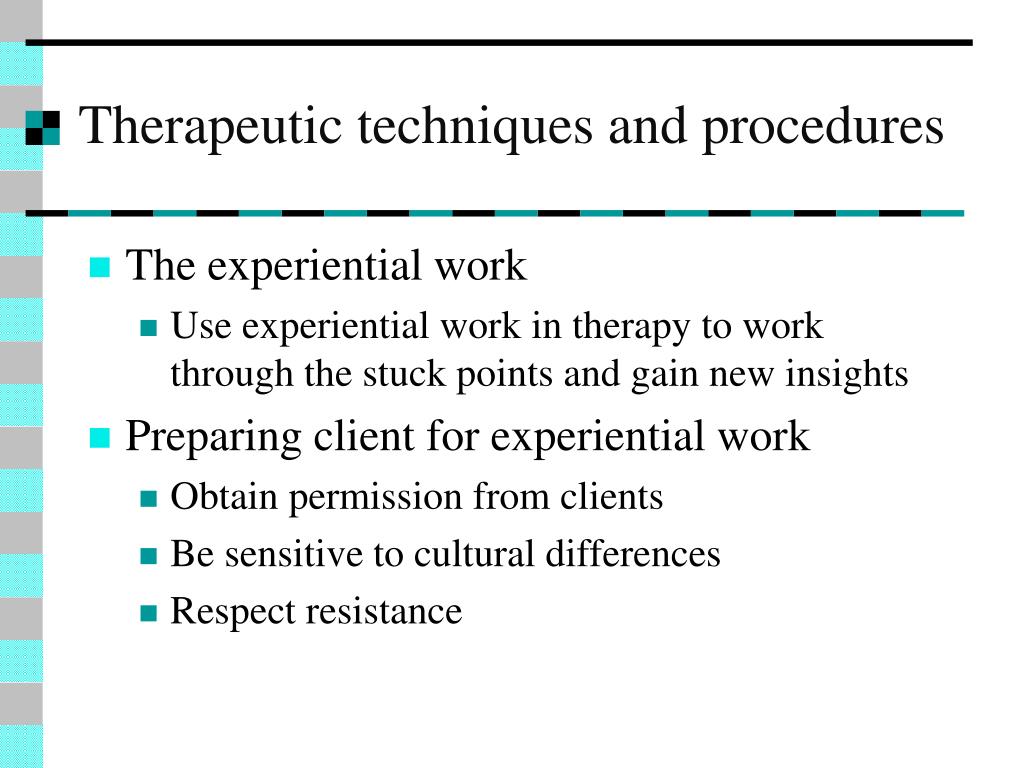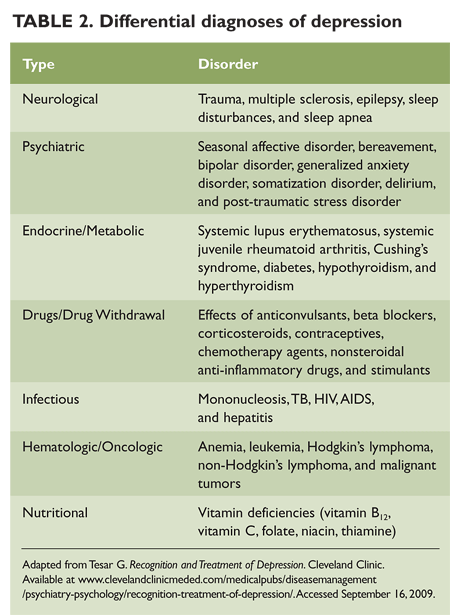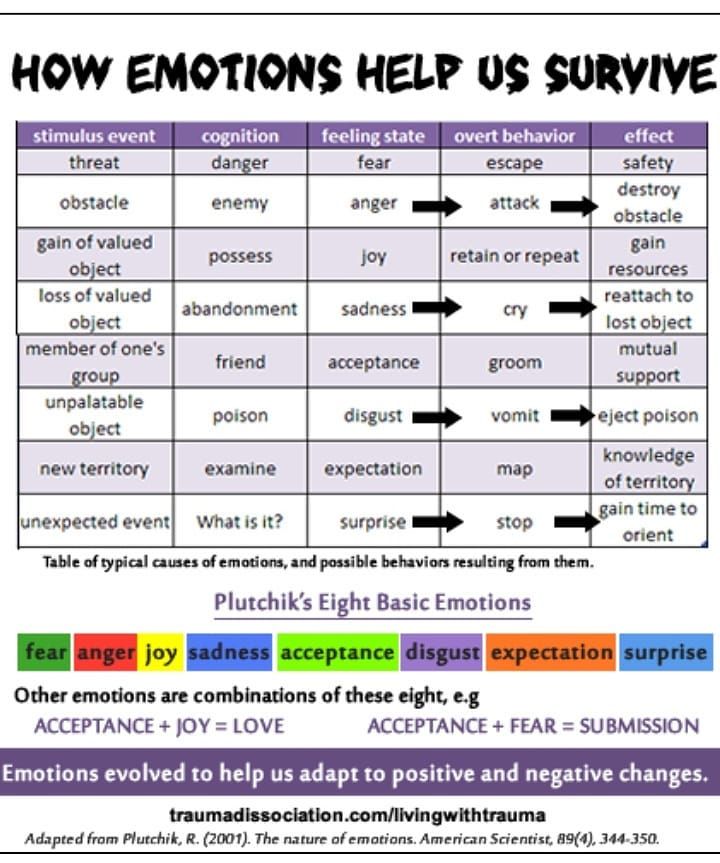Culture sensitive therapy
5 Ways to be a Culturally Responsive Therapist
By: Dr. Jessica Jackson
The death of George Floyd has brought discussions of racism to the forefront of America, and ultimately into the therapy room. For many clinicians, discussions of racism, discrimination, and/or the role that race plays in our daily lives has come up in therapy sessions. If it hasn’t happened yet, it will.
Our clients do not live in bubbles and are not exempt from the current social and political climate, especially people of color. Sue & Sue (2012) put it best, “…counseling and psychotherapy do not take place in a vacuum, isolated from the larger sociopolitical influences of our societal climate” (pg. 91).
I’ve received many questions and took part in many discussions with colleagues about how to help BIPOC (Black, Indigenous, People of Color) clients, specifically Black clients. My answer: practice cultural humility and culturally responsive therapy.
Moving beyond cultural competence to cultural humility and responsiveness
Cultural competence is a phrase I am sure has popped up in recent discussions you’ve had with your colleagues. For many of us, cultural competence is what was taught in graduate school. It was the standard for discussions of diversity for years in psychology. Cultural competence was a term that came into prominence in the early 1980s thanks to Derald Wing Sue. Culture competence is model of developing skills, knowledge and self-awareness to be more effective in working with diverse populations. While cultural competence is an important start; I encourage you to think and reflect deeper.
The American Psychological Association Race & Ethnicity guidelines and increased multicultural emphasis in training programs have helped the field of psychology evolve beyond just possession of knowledge and skills of other cultures — moving from a way of doing to a way of being. More and more we recognize that our cultural identity and that of our client are both salient aspects of the therapy dynamic (American Psychological Association (2003). Cultural humility and cultural responsivity are building blocks to understanding our clients and the cultural context that shapes their distress, building blocks that help us provide needed support on a deeper level.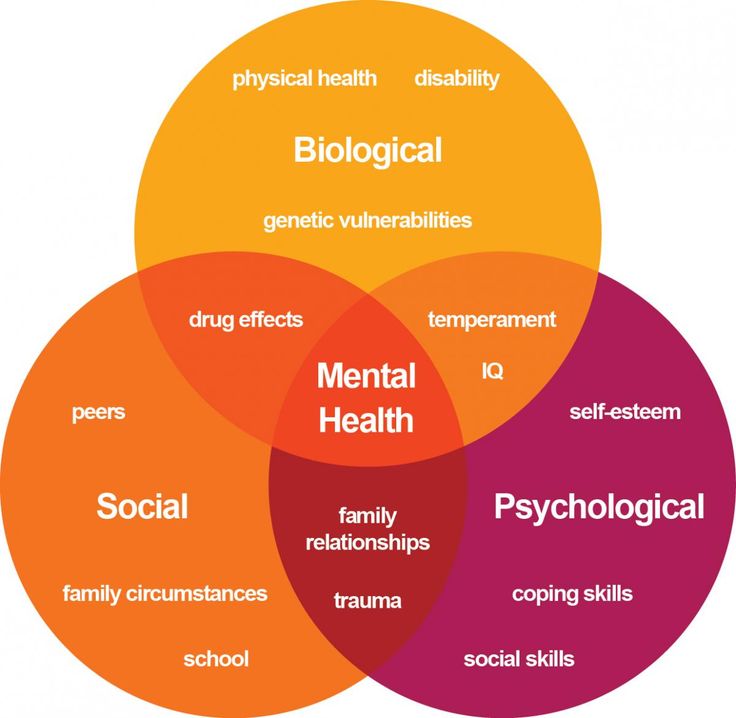
Davis et al. (2011) breaks down humility into intrapersonal humility and interpersonal humility. To practice cultural humility, we must have both an accurate view of ourselves and respect for others without an attitude of supremacy or superiority.
Cultural humility is a continuum of:
- Inward self-awareness,
- Outward valuing of others and
- Upward growth. (Hook et al. 2013).
Culturally responsive therapy is responding to and making room for the client’s culture in the therapeutic process. This may look like:
- Asking questions about their family’s cultural background and beliefs,
- Asking about their use of emotional expression, and
- Learning their perspective of their symptoms, even if it’s unrelated to the presenting problem.
As therapists, we cannot be culturally responsive if we have not first worked on developing cultural humility.
Developing cultural humility: the pre-work
Cultural humility is a mind-set shift and a career-long commitment. For those looking to get started on this journey, here are three skills you can begin working on. I call this the pre-work, the work that should happen on your own time before you enter the therapy room.:
For those looking to get started on this journey, here are three skills you can begin working on. I call this the pre-work, the work that should happen on your own time before you enter the therapy room.:
- Self-awareness – Engage in self-reflection and self-understanding to develop an accurate view of self. Take the time to reflect on how your different social identities (e.g. religion, sexuality, generation, acculturation, socioeconomic status, education, ethnicity etc.) have influenced your worldview. Engage in reading, dialogues, workshops etc. that help you have a better understanding of your privileges, biases and values.
- Valuing of others – Be curious! Demonstrate a willingness to learn from others around you (e.g. colleagues, clients, friends etc.) and respond from a place of genuineness and authenticity. It’s okay to not know everything, in fact, admitting ignorance and asking questions is a cornerstone of humility. A caveat to this point is to be careful that you are not placing the responsibility on clients to teach you about their culture.
 There is a difference between asking someone to teach you about racism and asking to learn their experience of racism. Finding the balance is necessary.
There is a difference between asking someone to teach you about racism and asking to learn their experience of racism. Finding the balance is necessary. - Growth – Remember, practicing cultural humility is a process. This is not a skill that we build overnight, but a continuum of continuing learning throughout our careers as clinicians. Push through discomfort and anxiety related to cultural conversations and enter conversations acknowledging that you may not feel your best throughout the conversation.
How to be a culturally responsive therapist
Once we have engaged in the pre-work, we can then focus on building on our increased self-awareness to foster empathy for clients. Culturally responsive therapy requires this empathy to truly understand and conceptualize how the client’s social identities interact and influence the client’s perception of their distress.
I have outlined five tips for doing culturally responsive work in the therapy room:
- One-size doesn’t fit all – Be mindful of how client’s social identities interact to make them unique.
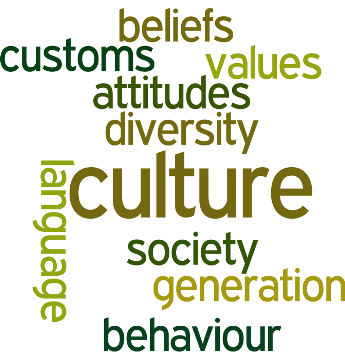 Appreciate individual differences and approach clients with an understanding of and respect for the client’s needs and cultural values. Be open-minded and recognize that there are multiple ways of viewing the world.
Appreciate individual differences and approach clients with an understanding of and respect for the client’s needs and cultural values. Be open-minded and recognize that there are multiple ways of viewing the world. - Consider how your values, worldview, upbringing, etc. may influence your client’s perception of, rapport with, or trust in you. – Conceptualization and diagnosis often go hand in hand. Consider how your client’s behaviors and decisions may be guided by their cultural values and beliefs.
- Ask yourself, are you being tolerant, inclusive or integrative? – Consider culture at each step of the appointment, from advertising for clients to the termination session with a client. Tolerance is acknowledging there are differences between you and your client. Inclusivity is asking them their social identities and cultural background and considering it in your conceptualization. Integration is all of the above and having office décor reflective of different cultures or having intake forms/screeners in multiple languages.
 The goal in culturally responsive therapy is demonstrating integration. Georgetown University’s National Center for Cultural Competency has a checklist available to self-assess the inclusiveness of your practice.
The goal in culturally responsive therapy is demonstrating integration. Georgetown University’s National Center for Cultural Competency has a checklist available to self-assess the inclusiveness of your practice. - Acknowledge what is happening in the world outside of the therapy room – Even if your client does not bring it up, it’s okay to open the door for the discussion. They may be waiting to see if you’re comfortable bringing up a certain topic (e.g. racism, police brutality etc.). Asking a client how they are holding up with everything happening this week (note what’s been in the news or all-over social media etc.) is a general way to make it clear you are open to the conversation. Keep in mind, acknowledging a topic does not mean that it has to be the focus of treatment, but could be helpful in establishing rapport.
- Don’t make assumptions – Ask clients how they identify. Don’t assume, based on your client’s outward appearance, that they don’t want to discuss certain topics OR that they relate to specific topics.
 We all have fallen prey to stereotyping. Work on being intentional about not generalizing based on prior knowledge or prior experience with similar clients. For example, with the current COVID-19 pandemic, some Black American clients may be more focused on grief or financial concerns than racism. That’s not to say racism may not be important to them but may not be what’s most affecting them in session. In this case acknowledging the racism that is occurring may help the client feel more comfortable addressing the other concerns.
We all have fallen prey to stereotyping. Work on being intentional about not generalizing based on prior knowledge or prior experience with similar clients. For example, with the current COVID-19 pandemic, some Black American clients may be more focused on grief or financial concerns than racism. That’s not to say racism may not be important to them but may not be what’s most affecting them in session. In this case acknowledging the racism that is occurring may help the client feel more comfortable addressing the other concerns.
Barriers to being a culturally responsive therapist
As you practice these skills, be mindful of common barriers that may get in our way:
- Fear
- Lack of preparedness for emotionally charged conversations
- Feelings of inadequacy
- Politeness protocol, and
- Colorblindness.
For example, fear of saying the wrong thing often goes along with feeling incompetent, especially when addressing a topic, you don’t normally discuss.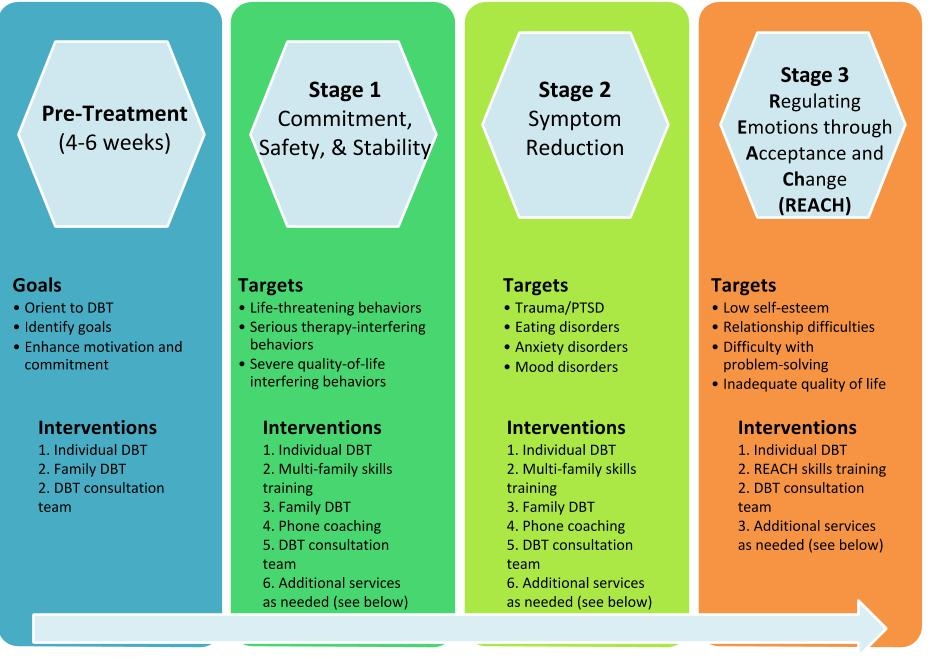 It’s okay to name this anxiety in the therapy room, as long as the intention is to communicate, “I might get this wrong, but I’m willing to take the risk to create a necessary space for my client.” What is not okay is not doing the self-work or preparing for the discussion and expecting the client to educate you in session.
It’s okay to name this anxiety in the therapy room, as long as the intention is to communicate, “I might get this wrong, but I’m willing to take the risk to create a necessary space for my client.” What is not okay is not doing the self-work or preparing for the discussion and expecting the client to educate you in session.
It’s helpful to give yourself time before the session to prepare and reflect on what you want to say. Jumping into this conversation without thoughtfulness or intentionality could disrupt the rapport, the opposite of the goal.
Lastly, I challenge you to push past colorblindness and politeness protocol. Telling a client that you do not see color is essentially telling them that you do not see the totality of who they are. It is not polite, it not good etiquette, it is not a compliment. If you feel the pull to tell a client you do not see color, I encourage you to pause and reflect on why that may feel safer for you.
We all make mistakes. Even when we have the best of intentions to support our client’s and meet them where they are, we can still get in our own way. There is simply no way to know it all, but we can communicate to our clients that we’re ready to listen and meet them where they are to support them.
There is simply no way to know it all, but we can communicate to our clients that we’re ready to listen and meet them where they are to support them.
Remember, cultural humility is being comfortable admitting what we don’t know. Leaning into this uncomfortableness has the potential to lead to deeper, richer connections with clients; making it well worth the effort.
Dr. Jessica Jackson is a counseling psychologist with a private practice in Houston, TX. She has provided mental health services in correctional facilities, university counseling centers, high schools and healthcare settings.
Jessica is a 2019 recipient of Society of Counseling Psychology, Section for Ethnic & Racial Diversity Outstanding Service to Diverse/Underserved Communities Award. Jessica is an alumna of the APA Council of National Psychological Associations for the Advancement of Ethnic Minority Interests (CNPAAEMI) Leadership Development Institute Fellow.
As a practitioner-scientist -advocate, her research focus has primarily centered around barriers to outpatient treatment, culturally competent clinical practice, race-related stress and racial trauma.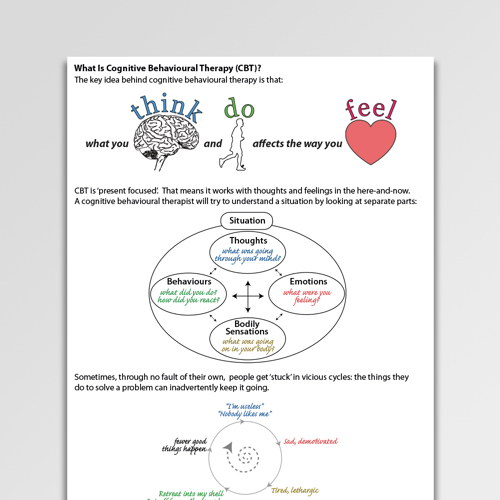
Connect with Dr. Jackson on Twitter, Instagram, or her website: www.drjlauren.com.
Culturally Sensitive Therapy - Menachem Psychotherapy Group
- By Seth Menachem
- November 9, 2021
- Individual Therapy
Cultural awareness is a core factor in connecting and empathizing with others. While all people have the same basic and fundamental needs regardless of their ethnic, religious, or cultural background, ignoring the impact that culture has on each and every one of us is irresponsible. We can’t truly understand ourselves or someone else without considering all of the cultural factors that contribute to one’s beliefs, values, and life experiences.
We can’t truly understand ourselves or someone else without considering all of the cultural factors that contribute to one’s beliefs, values, and life experiences.
Cultural sensitivity is especially important in the field of mental health. Most people attend therapy for two main purposes: to gain a better understanding of themselves and to improve their mental and emotional health. Neither of these goals are attainable without cultural awareness.
If you belong to the dominant culture in your area, cultural awareness or sensitivity may not be at the forefront of your mind. Because your own internal cultural beliefs and experiences align with your external environment, you may not often be aware of how much your culture affects your day-to-day life. However, if your culture differs from the majority in your area, you may be more conscious of the role it plays.
Culturally sensitive therapy is a valuable resource, especially for those who identify with cultures that differ from the mainstream belief system of the area. You should understand what culturally sensitive therapy is, why it matters, and how you can find a culturally sensitive therapist who will help you achieve your goals.
You should understand what culturally sensitive therapy is, why it matters, and how you can find a culturally sensitive therapist who will help you achieve your goals.
What Is Culturally Sensitive Therapy?
Culturally sensitive therapy is an approach to therapy that takes the client’s cultural background into consideration. This can include any cultural element, including ethnicity, race, religion, gender, and sexual orientation. A therapist who uses this approach has a strong understanding of the cultures of the clients they work with, and this knowledge informs their practice.
Rather than existing as its own therapeutic technique, culturally sensitive therapy is a philosophy that a therapist can apply to any other type of counseling. For example, your culturally sensitive therapist might use cognitive behavioral therapy, or CBT, if they believe it’s the best technique for you to achieve your mental health goals. However, they will also consider your ethnic or cultural background so that they introduce the technique in a way that best aligns with your values and beliefs.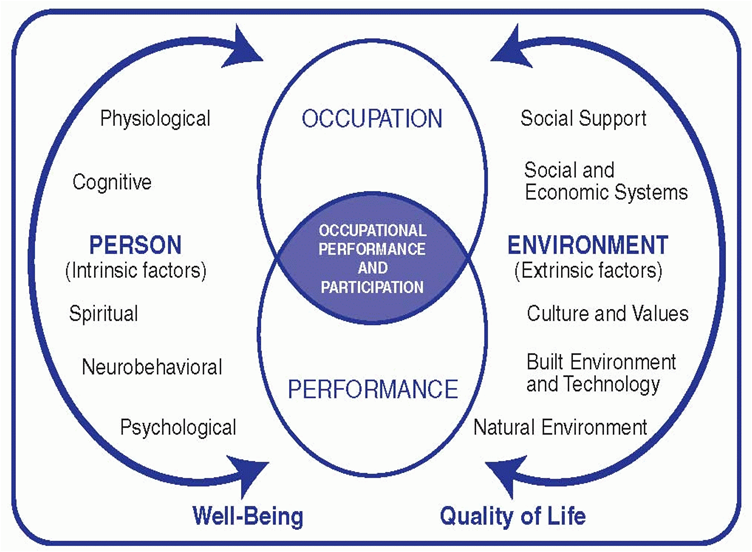
The Importance of Culture in Counseling
Cultural sensitivity brings an extra level of awareness, understanding, and empathy to the relationship between the client and the therapist. Any therapist can amplify their practice by using a culturally sensitive approach, and any client can benefit from working with a therapist who strives for cultural awareness.
Our Cultures Influence Every Level of Our Processing
Your culture can affect virtually every part of your life, from your family structure to your deep-rooted beliefs about yourself and your world. In therapy, you’ll explore your thoughts, emotions, and behaviors to better understand yourself, and including culture in the conversation can help both you and your therapist gain clarity.
A culturally sensitive therapist won’t force every discussion in therapy to explicitly revolve around your cultural background. However, when your therapist understands your culture, they can structure the conversation in a way that best supports you. For example, some cultures place a strong emphasis on privacy, and clients from these backgrounds might be more hesitant to open up about their past experiences or about their emotions. When the therapist takes this into consideration, they can avoid making the client feel pressured or exposed during the session.
For example, some cultures place a strong emphasis on privacy, and clients from these backgrounds might be more hesitant to open up about their past experiences or about their emotions. When the therapist takes this into consideration, they can avoid making the client feel pressured or exposed during the session.
Culturally Sensitive Therapy Makes Clients More Comfortable
If you have a lot of experiences with people misunderstanding or judging your cultural background, you may feel apprehensive opening up about it. In counseling, the relationships between the client and the therapist is a core part of the experience. Without feeling comfortable around your counselor, the environment will not be open or supportive enough for you to progress in therapy.
When you work with a culturally sensitive therapist, you’re more likely to feel comfortable being yourself in the session. You won’t feel like you have to over-explain your cultural background, and you won’t feel like your counselor is misunderstanding you based on cultural differences. By knowing that you’re understood and respected in the session, you’ll feel more supported and connected to your therapist.
By knowing that you’re understood and respected in the session, you’ll feel more supported and connected to your therapist.
Culturally Sensitive Therapy Can Help You Explore Your Culture and Its Effects on Your Experiences
You can explore any issue you need to in culturally sensitive therapy regardless of whether or not it’s specifically related to your cultural background. People of all ethnic and cultural backgrounds struggle with issues like anxiety and depression, so culturally sensitive counseling is not limited to working through specific cultural issues. However, if you are facing challenges that directly relate to your cultural background, working with a culturally sensitive counselor can be an incredibly valuable experience.
One of the most common issues people explore with a culturally aware counselor is cultural transitions. If you and your family have recently relocated to an area with a different dominant culture, you may find it difficult to adjust. Cultural transitions can have a massive impact on your sense of identity, and therapy is an excellent place to explore this topic.
Cultural transitions can have a massive impact on your sense of identity, and therapy is an excellent place to explore this topic.
How to Find a Culturally Sensitive Therapist
Not all therapists use a culturally sensitive approach to their sessions. While all counselors should view their clients with compassion and empathy no matter their background, some are simply more educated in cultural matters than others, and some value cultural awareness more than their colleagues.
Most licensing boards for therapists don’t require ongoing training in diversity. If cultural sensitivity is a priority for you, there are some additional qualities you should look for in your counselor that go above and beyond their license.
Fortunately, the internet is a great resource for finding therapists in your city. You can utilize online directories and search engines to look for counselors who specialize in your area of need. Once you’ve discovered a few options, explore their websites to learn more about their approach. If they use a culturally sensitive philosophy, they will discuss it on their website.
If they use a culturally sensitive philosophy, they will discuss it on their website.
Before you start working with a therapist, you can ask them some questions about their approach to treatment. Talk to them about their beliefs and philosophy regarding cultural sensitivity, and ask them if they’re familiar with your specific ethnic or cultural background. While a broad understanding of cultural awareness is helpful in therapy, working with a counselor who understands your individual background will help you feel heard and validated during your sessions.
Culturally sensitive therapy allows clients and counselors to explore mental health through the lens of culture, which can help you stay aligned with your background while you work toward self-improvement. At Menachem Psychotherapy Group, our licensed counselors use a culturally informed approach to treatment. To learn more about our services or to connect with a culturally sensitive therapist, you can contact us today.
Share:
High-frequency therapy at Leninsky Prospekt 66 | "Andreev hospitals
High-frequency therapy refers to a physiotherapeutic method in medicine based on exposure to high-frequency electromagnetic pulses or a magnetic field. The procedure is carried out with a frequency of 13.56 MHz. Inductothermy is a type of high frequency therapy. UHF therapy also refers to the procedure for exposure to high-frequency currents, carried out using special resonant inductors with a frequency of 40.68 MHz and 27.12 MHz. Also, high-frequency therapy includes the darsonvalization method, developed back in 19th century by a French physiologist. To date, the Darsonval apparatus is popular and widely used not only in medicine, but also in cosmetology, due to its effective effect on the skin and the ability to treat trophic changes.
An alternating magnetic field, passing through the body, induces spiral oscillatory movements in human tissues. This phenomenon is the main essence of vortex flows. As a result of this process, friction and collision of particles occur, which, in turn, contributes to the formation of heat. nine0003
Mechanism of action
Due to the thermal effect, prolonged hyperemia occurs in the tissues, affecting the deep layers. This helps to increase lymph flow and blood circulation. As a result, metabolic processes are enhanced, the glucocorticoid function of the adrenal glands is stimulated, neuromuscular excitability decreases, the threshold of pain sensitivity increases, enzyme-forming systems are activated, and the release of catecholamines increases. Oxygenation and supply of cells with nutrients increases, which, in turn, provides an increase in the local immune response. As for darsonvalization, due to its effect on nerve endings, the device has found wide application in neurology and psychiatry. Helps to normalize the processes of sleep and wakefulness. Indications and contraindications for high frequency therapy are listed below. nine0003
Helps to normalize the processes of sleep and wakefulness. Indications and contraindications for high frequency therapy are listed below. nine0003
Indications
- Subacute and chronic inflammatory processes (pneumonia, rheumatoid arthritis, bronchitis, hepatitis, cholecystitis, sluggish rheumatic heart disease, nephritis, chronic inflammatory diseases of the female reproductive system and much more).
- Diseases of the nervous system (manifestations of osteochondrosis of the spine, post-traumatic complications of the musculoskeletal system, bruises, metabolic and post-traumatic arthrosis-arthritis, bone fractures).
- Diseases of the cardiovascular system (arterial hypertension I and IIA, Raynaud's disease, atherosclerotic vascular obliteration). nine0018
Contraindications
- febrile conditions;
- hypertensive form of neurasthenia;
- neoplastic malignant process;
- acute inflammatory processes;
- tendency to bleed and bleed;
- severe atherosclerotic process of cerebral vessels;
- presence of a pacemaker;
- atherosclerotic cardiosclerosis accompanied by attacks of angina pectoris; nine0018
- circulatory failure stage II, as well as stages above;
- active tuberculosis of the lungs and other localizations;
- pregnancy;
- thyrotoxicosis;
- the presence of metal objects in the body in the area of influence.

The appointment of high-frequency therapy as a physiotherapeutic procedure, as well as determining the dosage and number of sessions, is carried out only by the attending physician. The session is conducted in a medical institution by specially trained medical personnel! nine0003
Spiritual culture therapy and national characters //Psychological newspaper
Tells about good, evil and national characters Mark Evgenievich Burno - Doctor of Medical Sciences, professor, author and founder of the domestic psychotherapeutic method Stormy."
Darwin the nature of his psychasthenic character [1, 4. p. 157-189] was predisposed to a deep natural-scientific tireless generalization of what is happening in the world of wildlife. But he complained about his weak ability to comprehend foreign languages, mathematics, the weakness of "theoretical" thinking, memory, and many other "mediocre" properties of the soul. Also brilliant Linnaeus , predisposed by his sensually autistic nature to exquisitely colorful symbolic intelligibility in an endless sea of plants (systematics), was almost expelled from school to be a shoemaker for poor progress [4, p. 143–156]. Unsociable, closed-profound Lamarck , thanks to his strong, "stone", clinging to facts and autistic-peculiar independent interpretation of them, which does not tolerate objections, made his great discoveries. He scientifically proclaimed the reason for the change in animals and plants precisely in changes in life circumstances. Grateful to him, Darwin considered “his biggest mistake” that he thought little about the influences of the environment. But Lamarck so confidently and fantastically incorrectly, dangerously predicted when, according to what weather, ships would sail, harvest, etc., that Napoleon strictly, publicly forbade him, already an old man, to publish this yearbook of his (Lamarck, 1935).
Also brilliant Linnaeus , predisposed by his sensually autistic nature to exquisitely colorful symbolic intelligibility in an endless sea of plants (systematics), was almost expelled from school to be a shoemaker for poor progress [4, p. 143–156]. Unsociable, closed-profound Lamarck , thanks to his strong, "stone", clinging to facts and autistic-peculiar independent interpretation of them, which does not tolerate objections, made his great discoveries. He scientifically proclaimed the reason for the change in animals and plants precisely in changes in life circumstances. Grateful to him, Darwin considered “his biggest mistake” that he thought little about the influences of the environment. But Lamarck so confidently and fantastically incorrectly, dangerously predicted when, according to what weather, ships would sail, harvest, etc., that Napoleon strictly, publicly forbade him, already an old man, to publish this yearbook of his (Lamarck, 1935).
There are many such examples. But I recall all this to the fact that such an unevenness of abilities is characteristic not only of geniuses, but of all people. May not be so bright. And one more thing: natural abilities and inability are at the same time natural properties of characters. It is indissoluble. Exercises, training can correct something in the character, but only a little. It remains to look for their strong innate properties. Often this strength turns out to be the strength of weakness itself [3]. I am convinced that if Darwin had not had his “mediocre” abilities, which he was ashamed of (as he wrote in his autobiography), he would not have had such a powerful, also innate, ability to deeply and constantly generalize what was happening in his beloved nature. “Everything is simpler than we think, but much more interconnected than we are able to understand” (Goethe). So, some unusual character traits of the overwhelming majority of mentally ill and ordinary, mentally healthy people seem to others “uncomfortable”, “unkind”, “heavy”, “unpleasant”, “bad”. But they are often inseparable from the good, bright, creative (also natural) properties of the soul. Our therapy with creative self-expression (M.E. Burno) [2] is one of the methods of natural-scientific therapy with spiritual culture, in which a specialist tries to help patients, through a psychotherapeutic study of characters, discover the strong, kind, creative in themselves and in other "weak" people, in order to be strong yourself on your path in life, in humanity. nine0003
But they are often inseparable from the good, bright, creative (also natural) properties of the soul. Our therapy with creative self-expression (M.E. Burno) [2] is one of the methods of natural-scientific therapy with spiritual culture, in which a specialist tries to help patients, through a psychotherapeutic study of characters, discover the strong, kind, creative in themselves and in other "weak" people, in order to be strong yourself on your path in life, in humanity. nine0003
I am talking about creativity here in the broad sense of doing exactly my own, unique, deed - in the name of good, when the soul has the suffering meaning of your life and a bright sense of self-defeat. Together with a sober understanding that there are no bad and good characters (including national ones), if we leave aside people who are innately moral and innately immoral. A person with any character can be innately predisposed to evil. Defensive patients are especially in need of this therapy - patients experiencing their inferiority, failure in life. nine0003
nine0003
Most healthy people (usually with very modest, healthy, pronounced character traits) do not have a pronounced innate predisposition to either morality (good) or immorality (evil). The experiences of these people and their actions significantly depend on their upbringing (family, school, etc.).
Yes, according to the laws of Nature and Society there will always be Good and Evil, but there are no good and evil characters, just as there are no good and evil peoples. There is innate good or evil and the fruits of good or bad upbringing. nine0003
Natural-scientific characterology helps to find in the soul of a person from another nation, next to the properties of character, sometimes causing some internal tension, the properties of grace, balancing the possible unusually unpleasant for someone. This sometimes softens xenophobic feelings, helps a person not only put up with the “alien” (not immoral), but also respect this “alien” with understanding. You respected something that is not your own, if it is, in essence, in the name of Good, but you yourself do not have this, but you have your own good. Tense authoritarianism in character often uncomfortably strains many vulnerable people. But after all, without this tension there are no just organizers, no defender-warrior who will protect you from Evil in a difficult hour. Synthonic disturbing male kindness-gentleness may not be to the liking of another warrior, but it is characteristic of many excellent doctors and a wounded warrior is grateful to her. nine0003
Tense authoritarianism in character often uncomfortably strains many vulnerable people. But after all, without this tension there are no just organizers, no defender-warrior who will protect you from Evil in a difficult hour. Synthonic disturbing male kindness-gentleness may not be to the liking of another warrior, but it is characteristic of many excellent doctors and a wounded warrior is grateful to her. nine0003
Characters have natural national characteristics, which in their own way color, illuminate the universal characteristics of some character, some kind of soul. A typical Frenchman is not like a typical Russian, and a typical Armenian is not like a typical Azerbaijani. Yes, there are other, non-characterological, tensions between people of the same people and different peoples (“rich and poor”, religious, historical confrontations). Everything is complicated here. A person who feels, understands the universal characterological in himself and in the "alien", is even able, thanks to this, regretting, risking his life, to save from death a helpless, safe enemy, characterologically similar to his relative.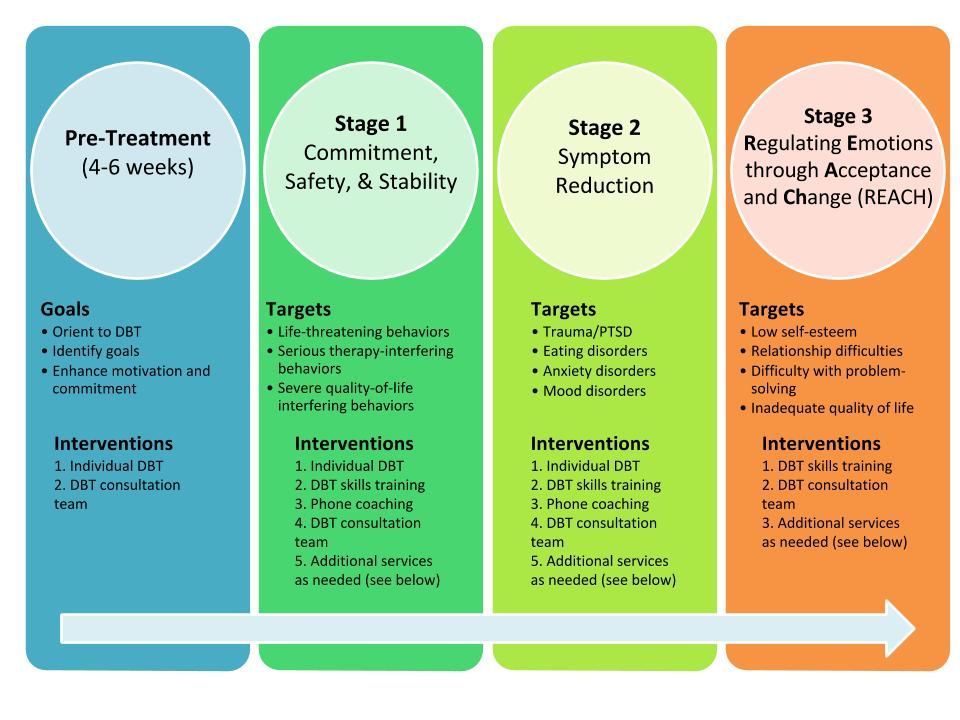 nine0003
nine0003
Characterological, national-characterological differences are quite important, they penetrate into the public in their own way. All this, whether you like it or not, today's "personal" (not "technical") psychotherapist has to talk about in psychotherapeutic groups of creative self-expression, because these questions disturb patients. But it is necessary to speak with a pure soul, moral responsibility, on the road of Goodness. For example, that the picture of the natural national character, to a certain extent, corresponds to the religion chosen by the people. This is natural [3, p. 274–276]. nine0003
The natural-scientific study of characters in our psychotherapeutic method makes it possible to see more clearly, more distinctly, to understand universal human characters. And, including, with their national-psychological coloring. Not just closed-profound (autistic, variant of autist), but closed-profound Russian, Ukrainian, German, Tatar. Not just a syntonic person (sanguine, a variant of a sanguine person), but a syntonic Armenian, a syntonic Frenchman. Etc. But after all, at the same time, these are the same synthonic, closed-profound, intensely authoritarian and all other universal characters, but only with a national coloring. There is a feeling of consonance, facets of consonance in patients: we are all Humanity. nine0003
Etc. But after all, at the same time, these are the same synthonic, closed-profound, intensely authoritarian and all other universal characters, but only with a national coloring. There is a feeling of consonance, facets of consonance in patients: we are all Humanity. nine0003
Every nation, like every character, is better able to do something important for the common life than other people and people. It is impossible, according to the laws of nature, to be able to do everything well in the world. It remains to live and exist together, helping each other with some special power of their own, respecting each other for what they themselves are less capable of. It can even be assumed that there are peoples who, by their nature, are especially predisposed to some special business (medicine, theoretical sciences, music, psychological prose, sports, etc.). According to all this, any nation, any character (universal, national) is no worse and no better than any other. nine0003
Even if there are no patients in the creative self-expression group who feel they are non-Russian people in their souls, it is still worth doing classes about the typical characters of another people from time to time.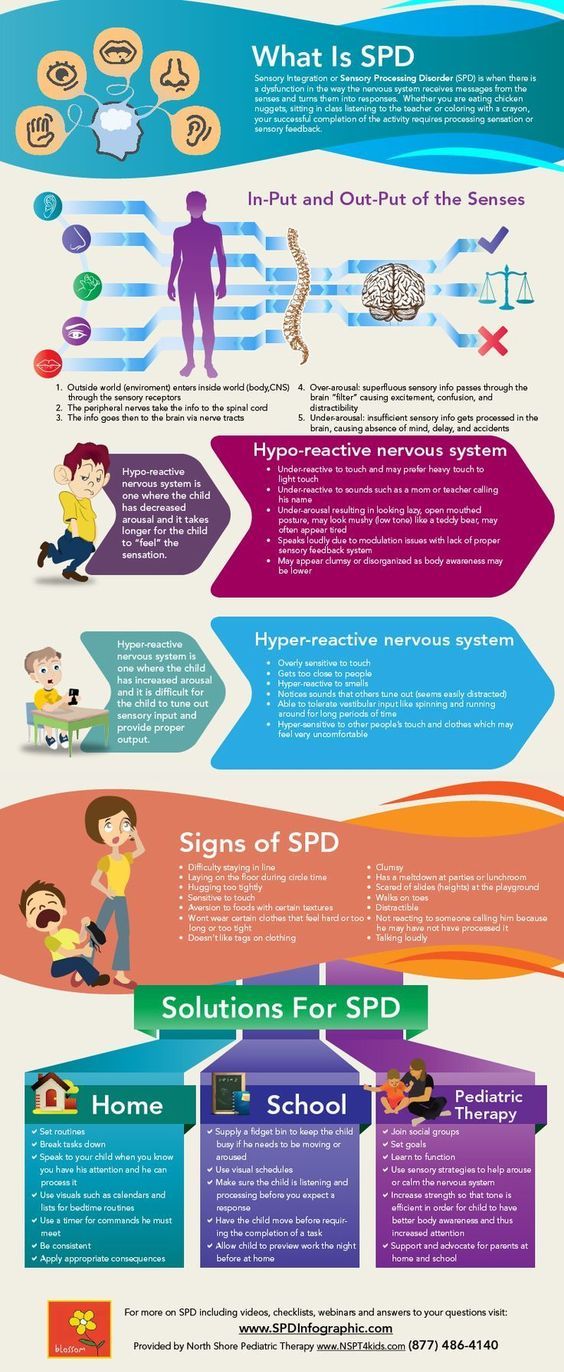 For example, about the characterological comparison of Bashkir folk tales with Russian ones. But always evil (immoral) should stand aside from national peculiarities. This natural evil principle, like the good one, exists in all peoples, all characters. Good triumphs over evil in all the folk tales of the world, because these tales are a great folk psychotherapy. nine0003
For example, about the characterological comparison of Bashkir folk tales with Russian ones. But always evil (immoral) should stand aside from national peculiarities. This natural evil principle, like the good one, exists in all peoples, all characters. Good triumphs over evil in all the folk tales of the world, because these tales are a great folk psychotherapy. nine0003
The Armenians have their own national characteristics, more or less coloring many of the characters of this people with a sad, proud cordiality. Azerbaijanis have a different, sensible cordiality, they have more energetic, strict national qualities. Many sanguine French people are naturally able to laugh at the Divine, the saints - their own and not their own. But in a Muslim, this often gives rise to a just for him, heavy anger in his soul. Deepening, immersion in natural-scientific characterology characterologically-psychologically explains why it is impossible in any way to laugh at the sacred of the neighboring people. Not only because it is simply impossible, it is simply dangerous, unethical, not only because it is a deep disrespect for the national, religious characteristics of the soul of the people, the people's heart, and dignity. But also because it is important here to understand and feel the national characterological. For a Muslim, usually all this is not just sacred, but intensely woundingly sacred. He is characterologically different, incomparably more mentally intense, vulnerable in this respect. And this must be respected. There are a lot of such difficult clashes and experiences in today's media. nine0003
Not only because it is simply impossible, it is simply dangerous, unethical, not only because it is a deep disrespect for the national, religious characteristics of the soul of the people, the people's heart, and dignity. But also because it is important here to understand and feel the national characterological. For a Muslim, usually all this is not just sacred, but intensely woundingly sacred. He is characterologically different, incomparably more mentally intense, vulnerable in this respect. And this must be respected. There are a lot of such difficult clashes and experiences in today's media. nine0003
Any people consists of people with various universal characters. These characters have a national flavor. In every nation, in its culture and history, one can see a typical national character, and sometimes several. For example, the French have a synthonic (sanguine) character (soul warehouse). Heroes of Balzac, Maupassant. Russians have an anxious and doubting character. Heroes of Tolstoy, Chekhov.